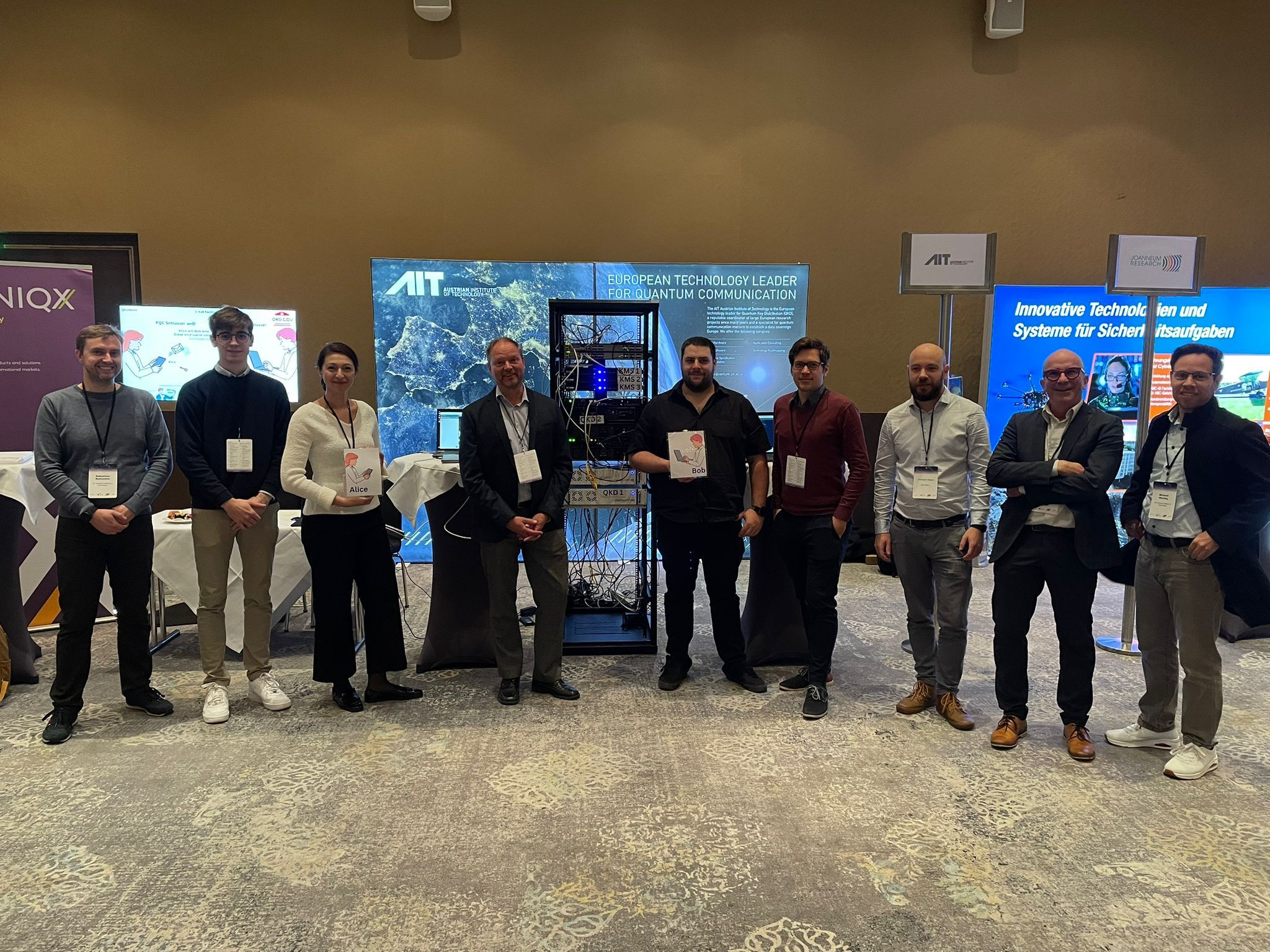Yet another successful showcase of the AIT QKD-KMS technology at the “1. Fachtagung KIRAS und Kybernet Pass (KuK) Sicherheitsforschung 2024” in Vienna within the QCI-CAT precursor project QKD4GOV. This time the three node setup was composed of one Quantum Optics Jena link and one Think Quantum link, serving keys to the AIT QKD-KMS layer. The demo showcased a modified chat application “Deltachat”. The application layer was provided by the QCI-CAT partner X-Net. New features of the QKD-KMS were showcased in this demo, for example the frontend and SDN component.
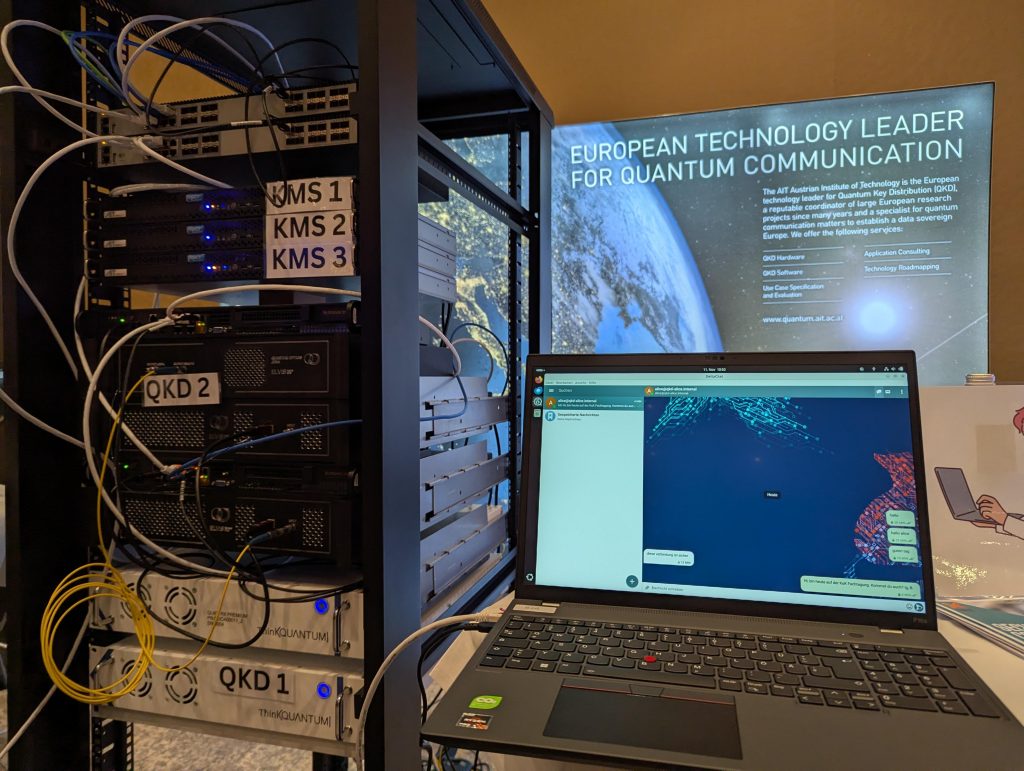
A remarkable note is, that the setup was put together on site in just a few hours before the conference started and immediately worked seamlessly, just in time before the first visitors were able to see this QKD network showcase. The goal was to demonstrate one of the outcomes of the QCI-CAT precursor project QKD4Gov at the security conference within the scope of the KIRAS security research programme. The demo was accompanied by a talk about QKD, QKD4GOV and QKD Networks by Hannes Hübel from AIT.
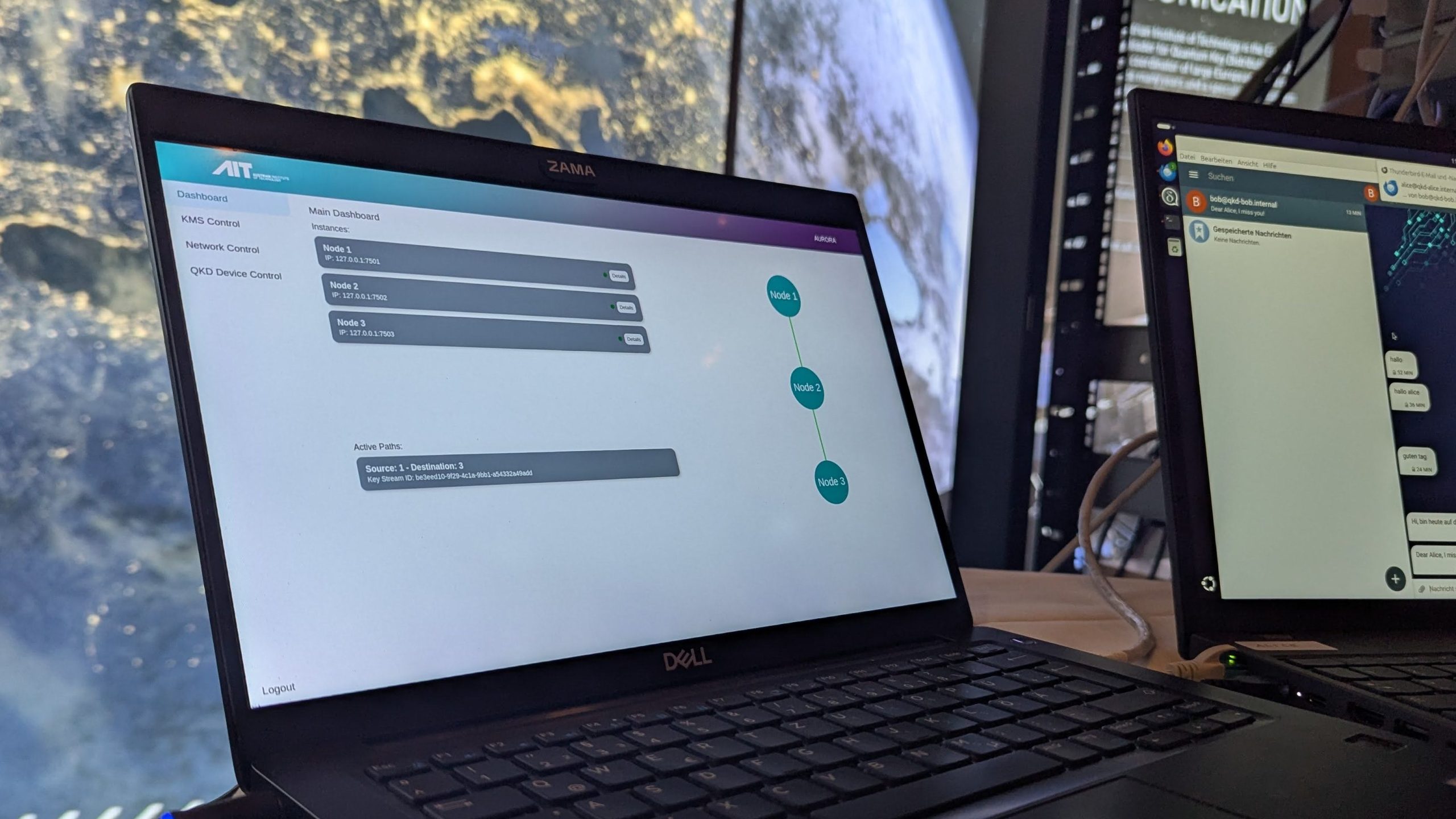
Noteworthy new features of the KMS, that were shown here is the frontent interface, which not only is a nice and easy to understand visualization of the network, the status and key rates of the individual KMS instances, but also comes with a central network configuration controller and node local agents following the SDN paradigm. With this tool a network administrator can monitor and configure the KMS instances, for example monitoring the status, key rates and obtaining a log file of any KMS instance in the network, but also configuring IP addresses of the KMS interfaces, adding or removing QKD Devices, or even shutting down a KMS instance. Further more the central SDN controller together with the local SDN agents is capable of dynamically assigning a key forwarding path through the network for the KMS instances.
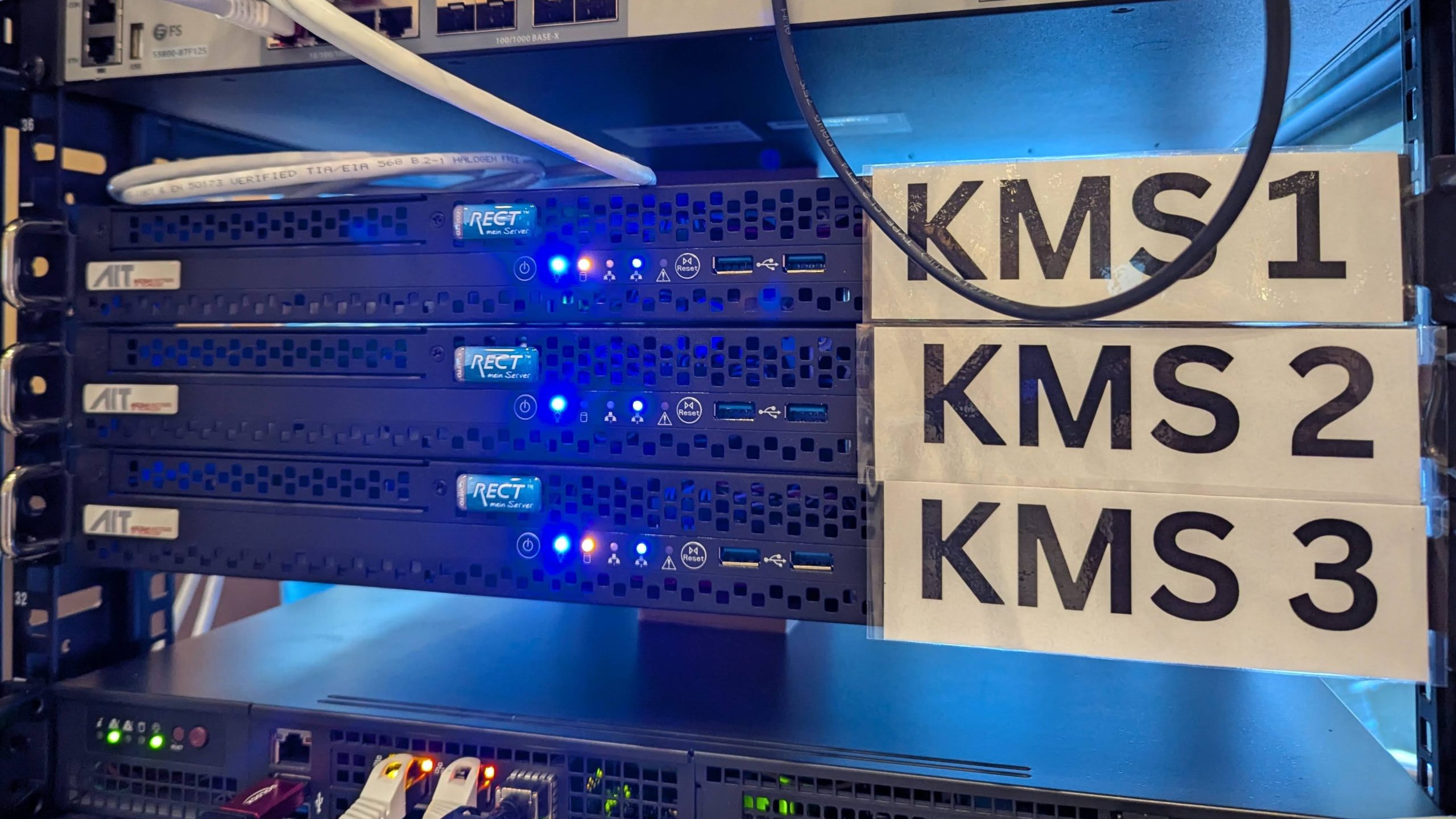
Apart form the first showing of the frontend the KMS came with additional improvements. The servers were configured, in a way, so they directly connect to the QKD devices with a direct LAN cable connection, which means the traffic between the KMS and QKD devices don’t need to use the local network. Therefore this critical connection is out of the scope of the network, basically additionally air gapped to reduce the attack capabilities on this crucial interface. This is also the first opportunity to verify the KMS interacting with the QKD devices by Think Quantum. Supporting the frontend capabilities in the KMS was also a big addition to the software. The KMS was also benchmarked during that event showing its very resource effective operation.
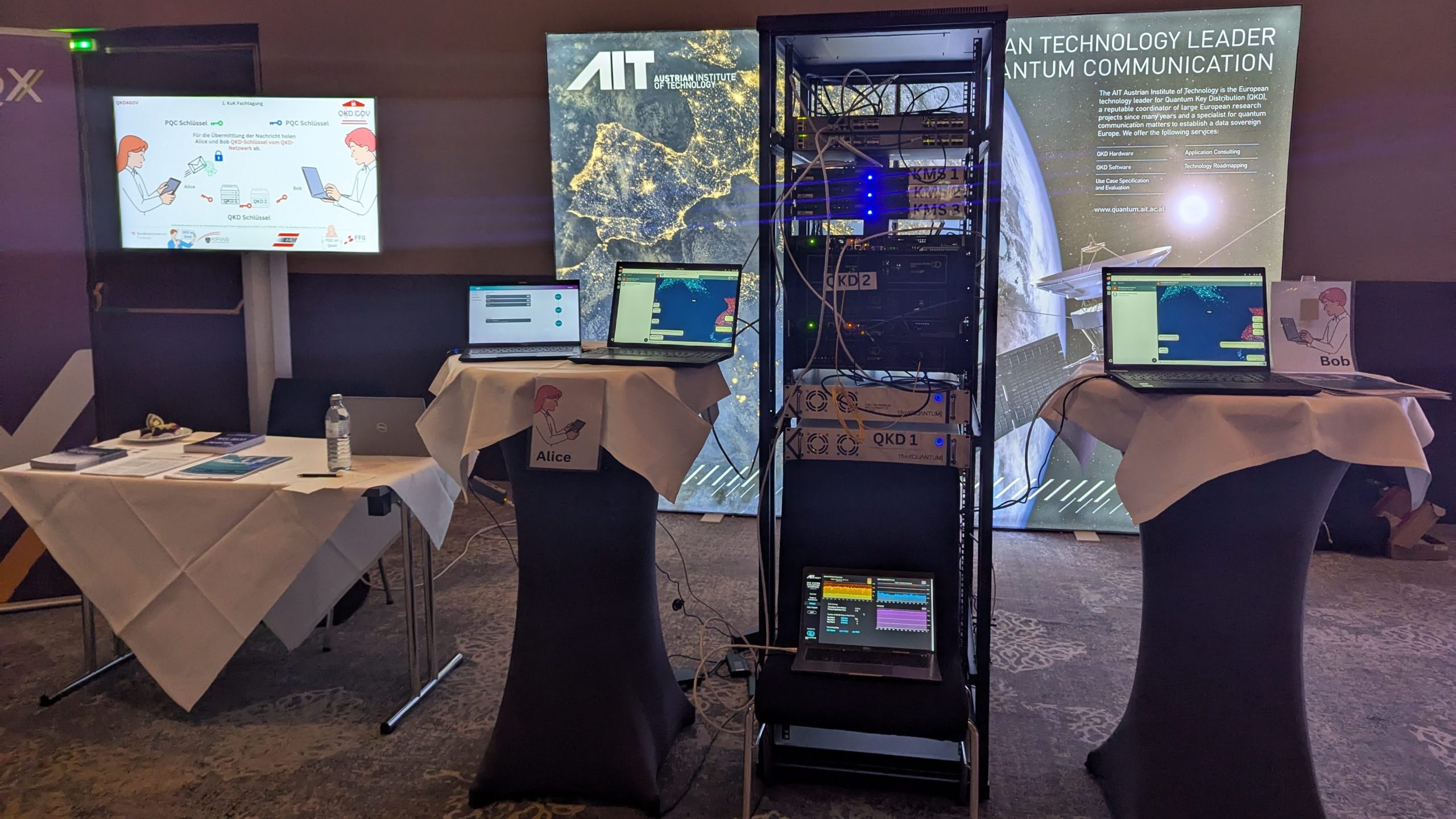
Related: Linked in post by the QCI-CAT project
